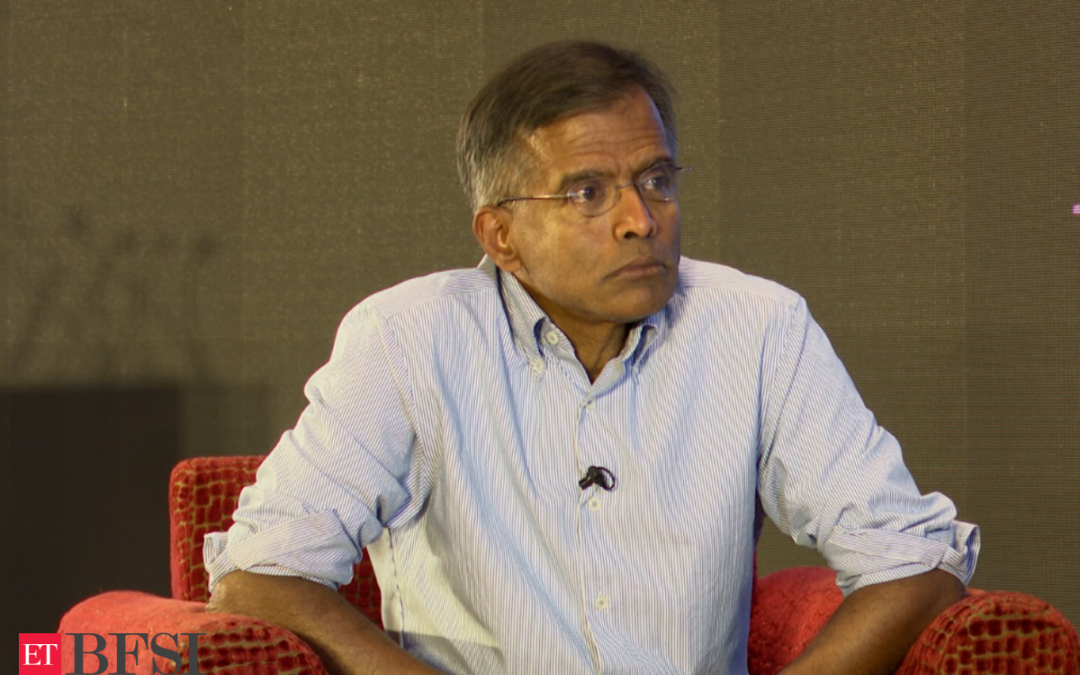Damodaran shared his insights on the evolving landscape of startups, banks, and the stock market, and delved into the risks and rewards associated with risk capital, the challenges startups face in maintaining healthy unit economics, and the significant shift in the market over the last two years.
He further discussed the Adani Group’s debt structure amidst the Hindenburg controversy, expressing confidence in its infrastructure projects while emphasizing the need for a balanced debt strategy.
On governance, he argued that SEBI’s lagging response stems from bureaucratic risk aversion rather than corruption. He also called for startups to focus on innovation that makes a meaningful difference in people’s lives, rather than just software or intermediary solutions.
Q: Earlier you told me, startups are money burning machines. In the last 5 years, they have raised more than $100 billion. A few of them got listed but very few are successful in building value. Are they making a difference? Are they building value?
What startups draw on is risk capital, there is nothing good or bad about it. These are people who have invested in the company in spite of the losses and risk capital because these companies have huge pay off of 700-900%. The market is composed of both risk capital and safety capital.
Much of the last decade, risk capital ruled. But the year 2022 represented a break in the risk capital story, because inflation went up. Then risk capital started asking questions which were true to the sidelines, but it really has not come back, even though, the market has come back.Prof. Aswath Damodaran
Q: The IPO market hasn’t picked up (for startups) despite the overall market doing so and when people say when will it be normal again?
We are talking as if 2010 to 2022 was normal but maybe that was an aberration. Maybe this what we have today is the new normal. What we had was an abnormal period of too much risk capital. This is healthy for the market but painful for companies who aren’t able to raise additional rounds. This is the big shift that has happened in the last 2 years.
Q: Is unit economics the only way to measure startups? Can you decode unit economics for measuring startups?
We are hoping and praying that the good unit economics will actually translate into bottom-line profit. It measures how much money you make on the next unit you sell.
| The good unit economics is priced at a dollar and takes only 10 cents to make it. What makes 90 cents is your gross profit. Then you have to cover marketing, general operating expenses, so your unit economics can look great. But for young companies, the operating expenses is negative so it’s not enough. |
Then if I say, you keep growing the company with this unit economics and my gross profit is going to be disproportionate and eventually my operating profits are going to turn positive. For that, unit economics has to stay healthy and they have to provide enough gross profits to cover the other expenses.Q: Banks are going through margin pressures due to various reasons. How do you value banks? How do you see the bank’s growth?
Generally, to grow as a bank, they start with the easiest customers first and then keep adding customers. But then it gets tough and tougher as competition grows.
As your loan volumes expand, then bringing new people into the system who might not be as good as credit risk, is challenging. But there is nothing wrong in lending to people where credit risk is high, because regulatory capital is there to cover those losses. Indian banks have much better capital than rest of the world.Aswath Damodaran
I don’t think they are putting themself at the risk of failure. But it might mean the net income growth is going to flag because even though your loans are growing, if you are charging lower interest rates, your income is not going to grow proportionately. Over a period, banks might grow in terms of loan volumes and size but the profit might not keep sake with the growth.
Q: As consumerism is high, the shift of banks towards small-ticket size loans is also growing, will it make any difference?
That’s part of the process, If banks want to increase their loan books, they have to start with the easy ones. Because they got the large ones already. They have to go the parts of the market that are not well covered, and there might be smaller companies that have never borrowed money so it’s natural if they want to grow as a bank.
The Reserve Bank of India (RBI) has to ask that are they putting risk capital at risk, are they overreaching? There is nothing wrong with lending to a young company. That’s when you open the door to drawing down of the regulatory capital.
Q: What companies will do well in future or build value and who will not?
Two different things. You can do well in operations but can be bad at investments.
| If you’re going to grow at 20%, your margins are gonna grow at 10-15%, that sounds like good news. Unless I price this company growing at 25% and margins at 18%. A lot of Indian companies are priced on expectations that they can’t deliver. |
There are going to be disappointments along the way. Again that’s natural, part of the process of maturing and getting better.
I generally look at companies trading high multiples and earnings, like Asian Paints. It’s a great company but we pay 50 times earnings assuming a growth rate and net margin improvement that might be beyond their reach.
I think we need to keep two these two things separate- what makes for a great company and what makes for a good investment. They are different processes. Many matured companies in India are priced as if they are gonna have growth and their explanation is that India is a growing country.Aswath Damodaran
State Bank of India, for example. Any other country SBI will grow roughly with the growth rate of the economy,but in India It will grow faster because of the exponential growth opportunities in India. So, basically we are tracking economic growth with your revenues and margins.
Q: In your research on Adani Enterprises (6 months back) you said the debt is very high on the Adani balance sheet. What’s your view now since Adani group has raised funds?
My original point is the whole Hindenburg report says that the entire group was a scam, there was nothing at the core and it had no value. That’s not true. The Adani Group is a competent infrastructure company in the country which is in massive need of infrastructure. The story of Adani is part of India’s story and the fact is that Adani supplies infrastructure. The problem that I see is the value control.
Looking at the prices they were trading, they could have chosen to raise equity rather than borrowing money. But they did not dilute their ownership of the company. Similar is the case with other family group companies in India. They prefer to put control on the company over healthy growth and expansion, because they don’t want to dilute their ownership.Aswath Damodaran
So, Adani is growing, they have big projects and hence they are borrowing money and showing it up.
Q: But are you comfortable with the debt on the Adani balance sheet?
They are in infrastructure projects and cash flows are contractual which they can use to pay the debt. Infrastructure companies around the globe tend to borrow more than many other companies because of their characteristics. So am I concerned about whether they will go bankrupt? I don’t think so, they have the capacity to raise capital. But they need to think about a healthy debt mix. And they should think about equity to do it, since now the prices have rebounded so they can bring their debt ration down.
Q: Hindenburg has questioned the SEBI and blamed the Chairperson for the involvement in the Adani issue..The governance body itself is in question, what kinds of impact do you see?
Let’s stop having thin skin now. Sticks and stones break your bones but words can’t hurt you.
You are a regulator and you pass rules. Of course there is going to be push back. It’s not an insult. If someone says you are being lags, your job is not to say, how dare you insult me…
Your job is to show there are no lags. But the part of the problem is, regulators do lag.
There were lags because in India when you’re a bureaucrat, you get no upside from making decisions, you get a downside when you take the decision and it goes wrong. So what do they do, they just delay it. In the old days they would just take a big stack of files and send it to the next highest person. Now variation of the same is happening.Aswath Damodaran
Bureaucrats are not making timely decisions because they don’t want to deal with the downside. It’s the nature of how you reward and punish. As long as you punish them for making mistakes on the upside and reward them for not creating a crisis on the downside, they are not gonna do it.
To me, it doesn’t strike of an action of a corrupt regulator but that of a risk-averse regulator. I don’t want to make a decision because if I take a decision I will only get the bad stuff so I will put it off and delay it. So I disagree with Hidenburg’s observation on this part.said Damodaran.
Q: What kinds of (startup) businesses do you think will work and fail?
I think too many startups, not just in India, are at surface level innovators. In what sense Ola and Uber are innovative companies. They are intermediaries, which took advantage of the smartphone.
I would like startups do to work on true innovation, work on products, no more software or intermediaries help me easier order food from restaurants or appliances from stores. I think there should be startups working on tracking healthcare for poor people.Aswath Damodaran
There is a huge need for great businesses in the healthcare space. Because Indians are more prosperous now than they were 20 years ago and they will need health care. Startups should also go into non seductive businesses.
So we have to reorient start-up culture and direct them to places that make a difference in people’s lives, especially those people who dont get any benefit. People can use the Zomato app to order, but I would love to see an app that allows me to access healthcare or get a loan much easier, because that will change my life.Aswath Damodaran
I am not saying there are no companies in this space, but very few. Because it requires hard work, infrastructure and longer time horizons than writing softwares and creating an app which makes money and scales up quickly.











